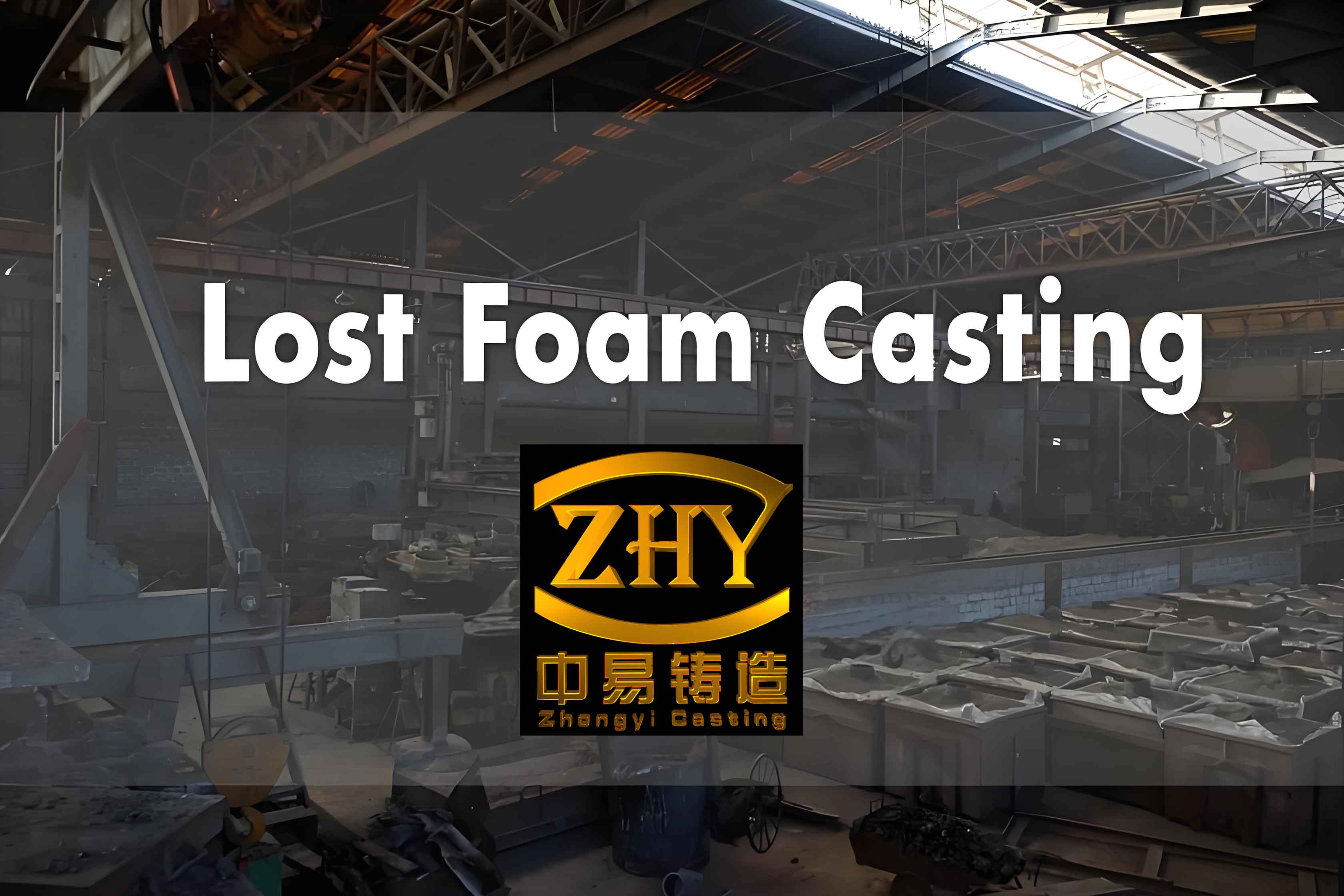Abstract: This paper introduces the vibration system used for lost foam casting and the factors influencing the vibration effect. The casting deformation and sand burning-on occurring in the process of using the lost-foam model vibrating system are described in detail. Corresponding improvement measures are proposed and tested. The production results demonstrate significant improvements in casting quality.

1. Introduction
Lost foam casting requires that the molding sand can tightly fill the mold space during molding. Therefore, the vibration system is one of the key equipment. The factors affecting the vibration effect include molding sand, sand-adding device, sandbox, vibration table, and control system. This paper focuses on the research and application of a new vibrator table for lost foam casting.
2. Current Status of Lost Foam Vibrating System
2.1 Vibrating System Description
The company adopts 20~40 mesh quartz sand with a manual cloth bag sand-adding method. The sandbox size is 1450mm × 1200mm × 1000mm. The vibration table adopts an imitation of the GK free-floating vibration table, with the difference that the motors are suspended on both sides of the vibration table, with one motor on each side.
2.2 Problems and Causes
Table 1: Problems and Causes in Lost Foam Casting
| Problem | Cause |
|---|---|
| Sand burning-on | Weak horizontal filling capacity of the vibration table, low compactness of molding sand in dead corners, and iron liquid breaking through the coating during pouring |
| Casting deformation | Large differences in vibration acceleration at different locations, resulting in sand flow and pressure deformation on the foam pattern |
3. Improvement Measures and Practice
3.1 Enhancing Sandbox Rigidity and Strength
The bottom of the sandbox is reinforced with #10 channel steel to increase rigidity and connect the sandbox into an integral frame, which facilitates the transmission of vibration force.
Table 2: Deformation Amount of Sandbox on Its Bottom and Side
| Location | Deformation Amount (mm) | Improved Deformation Amount (mm) |
|---|---|---|
| Bottom | Original: Large deformation | Improved: 1/3 of original |
| Side |
3.2 Structure and Control of the Vibrating System
The vibration table is jointly developed by the company and Yongji Shengyuan Company, adopting a waist-hugging clamping frame structure similar to Vulcan, with two vibration motors on each side. The sandbox is clamped by eight 45° inclined planes.
The control system consists of four frequency converters and a PLC, which controls the vibration acceleration, amplitude, and angle to ensure orderly flow of molding sand and uniform filling into all parts of the model while maintaining a certain compactness.
3.3 Performance Testing of the Vibrating System
3.3.1 Vibration Consistency Testing
Acceleration measurements are taken at 18 locations on the sandbox, with 3~4 points at different heights at each location.
3.3.2 Influence of Fit Clearance Between Vibration Table and Sandbox on Acceleration
After grinding the mating surfaces, the acceleration at most locations is significantly increased, indicating that the mating condition between the sandbox and vibration table has a significant impact on acceleration.
3.3.3 Mold Filling Effect Testing
Table 3: Mold Filling Effect Statistics
| Filling Position | Filling Effect |
|---|---|
| Position 1 | Can fill horizontally up to 70mm |
| Position 2 | Can fill horizontally up to 128mm |
4. Production Verification
4.1 Filling Capacity Verification
The flywheel housing is placed vertically in the sandbox, with two areas needing filling. After using the new vibration table and corresponding vibration processes, no sand burning-on was found in 16 validation castings, and the scrap rate due to sand burning-on decreased from 2.76% to 0.67% in subsequent production.
4.2 Deformation Verification
By measuring the inner diameter of the flywheel housing stop shoulder both horizontally and vertically, it is evident that the deformation is significantly improved.
Table 4: Inner Diameter Measurement Value of Stop Shoulder of Flywheel Shell
| Measurement Position | Original Measurement (mm) | Average (mm) | Improved Measurement (mm) | Average (mm) |
|---|---|---|---|---|
| Horizontal | 506.2, 506.0, etc. | 506.1 | 506.0, 505.8, etc. | 505.9 |
| Vertical | 507.8, 508.2, etc. | 507.9 | 506.4, 506.6, etc. | – |
By using the new vibration table, the Z-direction dimensional deformation is significantly reduced, resulting in a decrease in related scrap rates from 2.9% to 0.65%.
5. Conclusion
This paper introduces the research and application of a new vibrator table for lost foam casting. By improving the sandbox structure, optimizing the vibration system, and conducting performance testing, the casting deformation and sand burning-on issues are effectively improved. The production results demonstrate the effectiveness of the proposed measures.
